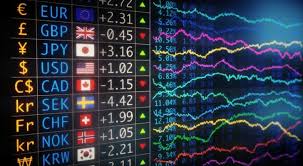
Forex trading charts are essential tools in the modern trader’s arsenal. Understanding the various types of charts, their purposes, and how to decode them can significantly enhance your trading strategy. Whether you are a beginner or an experienced trader, mastering forex trading charts can lead to more informed decisions in the dynamic world of foreign exchange trading. For more insights, check out forex trading charts https://forex-exregister.com/.
Understanding Forex Trading Charts
Forex trading charts serve as visual representations of currency pair price movements over specific time frames. Traders rely on these charts to analyze trends, identify patterns, and make predictions about future market movements. By studying these visual tools, traders learn to recognize opportunities to buy or sell currency pairs based on historical data.
Types of Forex Charts
There are several types of forex charts, each with its unique advantages and applications:
1. Line Charts
Line charts are the simplest form of chart, depicting only the closing prices of currency pairs over time. They connect these closing prices with a continuous line, making it easy to visualize overall trends. While they provide a clear picture of price movements, they do not offer much detail about the trading session, such as opening prices or daily volatility.
2. Bar Charts
Bar charts provide a more comprehensive view of price action. Each bar represents the open, high, low, and close (OHLC) prices for a specific period. The vertical line of the bar indicates the range of prices, while small horizontal ticks on the left and right show the opening and closing prices, respectively. This format allows traders to see not only the price movement but also the price action within that time frame.
3. Candlestick Charts
Candlestick charts are one of the most popular tools among forex traders. They display the same OHLC information as bar charts but in a more visually digestible format. Each ‘candlestick’ consists of a body, which represents the price range between the open and close, and wicks that extend above and below the body to indicate the high and low for that period. Different candlestick patterns can indicate bullish or bearish market sentiment, making them crucial for technical analysis.
How to Read Forex Trading Charts

Reading forex charts involves more than simply understanding their structure. Here are a few tips to help you analyze charts effectively:
1. Identify Trends
Trends are the market’s general direction over a period of time. They can be upward (bullish), downward (bearish), or sideways. Learning to identify these trends can help traders make decisions on when to enter or exit trades. Various tools, such as trend lines and moving averages, can assist in determining the trend direction.
2. Understand Support and Resistance Levels
Support and resistance are critical concepts in forex trading. Support refers to a price level where buying interest is strong enough to overcome selling pressure, while resistance refers to a price level where selling interest overpowers buying pressure. Identifying these levels on your charts can provide valuable insights into potential price reversals or breakout points.
3. Use Technical Indicators
Technical indicators, such as the Relative Strength Index (RSI), Moving Average Convergence Divergence (MACD), and Bollinger Bands, can further enhance your analysis of forex charts. These indicators provide additional data and signals that can confirm trends or point out potential reversals. Traders often use a combination of indicators to strengthen their trading strategies.
The Importance of Time Frames
When analyzing forex trading charts, the time frame you choose to view can significantly impact your trading decisions. Common time frames include:
- 1-Minute (M1): Useful for scalping strategies.
- 5-Minute (M5): Popular among day traders.
- 1-Hour (H1): Offers a broader view for intraday trading.
- Daily (D1): Common among swing traders.
- Weekly (W1) and Monthly (M1): Used for long-term analysis.
Each time frame provides different insights and can yield varying results. Traders may switch between multiple time frames to gain a comprehensive understanding of the market.
Risk Management and Psychology
While understanding forex trading charts is essential, the psychological aspect of trading and risk management cannot be overlooked. Recognizing your emotional responses, maintaining discipline, and implementing effective risk management strategies are crucial for long-term success. Always set stop-loss orders to minimize potential losses and ensure that each trade aligns with your overall trading strategy.
Conclusion
Mastering forex trading charts is vital for anyone looking to succeed in the foreign exchange market. By familiarizing yourself with different types of charts, improving your reading skills, and integrating technical analysis into your trading strategy, you can enhance your ability to make well-informed trading decisions. Remember, consistent practice and continued learning are key components of successful forex trading.
